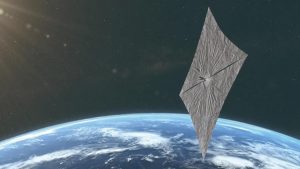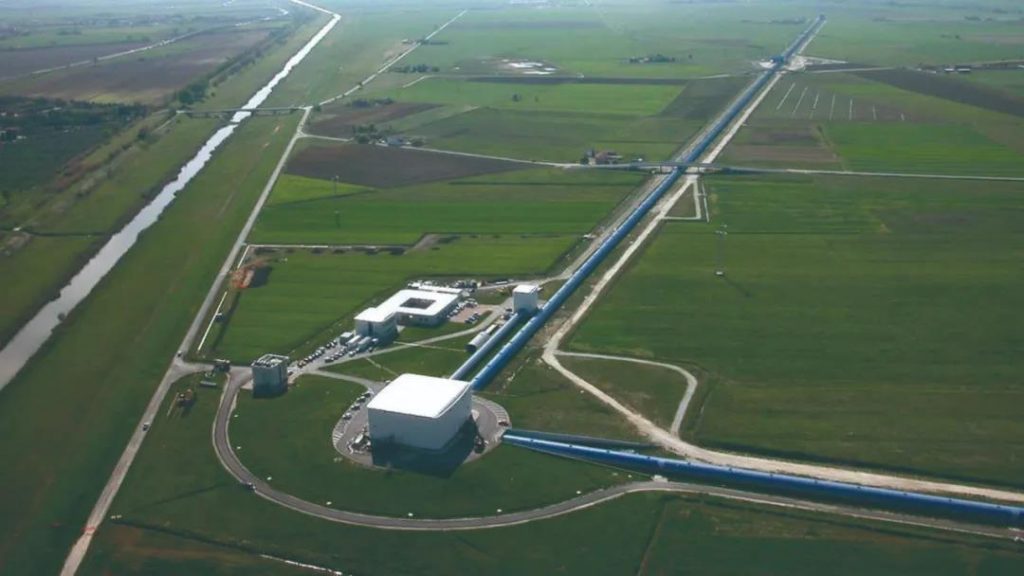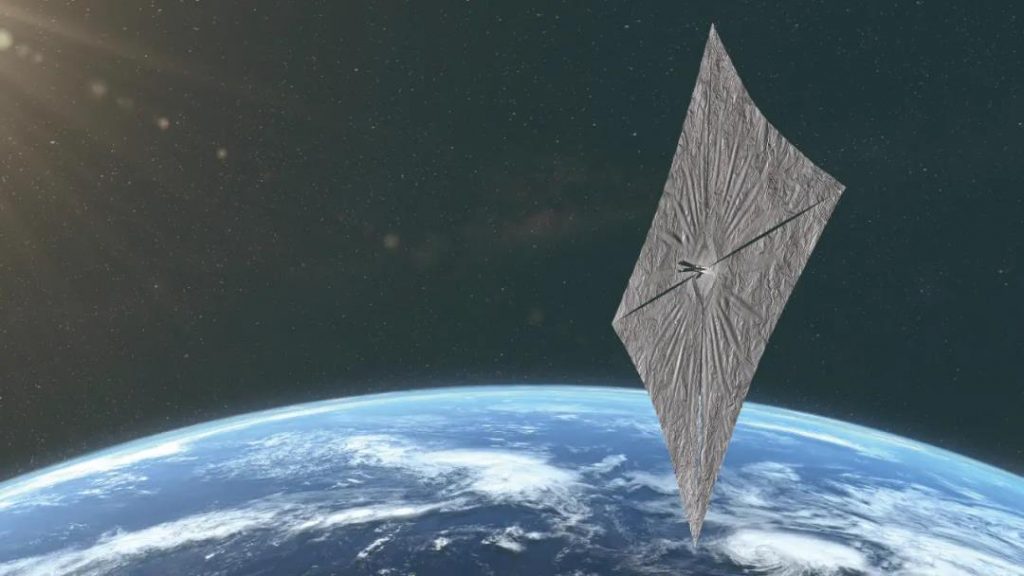
According to cosmologists, there is a kind of black hole that should have been born in the big bang. They hold the key to solving many current cosmological problems. Now it is claimed that such a black hole is lurking at the edge of the solar system.
Planet nine is actually a black hole?
In the outer solar system, outside Pluto, it is a vast wilderness. Most astronomers believe that there are a group of dwarf planets similar to Pluto. If that’s the case, it’s nothing strange, because none of this is what we expected.
However, astronomers found some strange phenomena there. For example, the orbital planes of some dwarf planets point in the same direction, like a group of guards saluting an officer.
In order to explain this phenomenon, they assumed that there was such a ninth largest planet in the solar system – “planet 9”. It was its gravity that made the orbital planes of those dwarf planets so consistent. It is estimated that the planet has 5 ~ 15 times the mass of the earth.
But this hypothesis faces a difficult problem, that is, how to explain the origin of the planet. We know that all planets and asteroids in the solar system are formed in a primitive disk around the sun. The farther away from the sun, the thinner the material. At the distance where planet nine is located, there is not enough material to form such a large thing.

Another explanation is that “planet nine” may have formed closer to the sun, and then hit the periphery of the solar system due to collision and other reasons. But there is also a problem with this explanation, because a collision seems to be unable to complete this work. It needs a series of relay like collisions to hit planet nine so far.
In the view of Jacoby Scholtz, a British theoretical physicist, it is too coincidental to go through so many interlocking collisions in the same direction. He believes that we might as well consider other explanations. For example, it is a black hole – but it is not a black hole we are usually familiar with, but a primitive black hole.
So, what is “primitive black hole”? How is it different from what we usually call a black hole? This starts with the classification of black holes.
Three Black hole
Black holes are “monsters” in the universe. Nothing, including light, can escape their strong gravity. They are the celestial bodies predicted by Einstein in the last century. However, it was not until 2015 that the gravitational wave was detected by the laser interferometer gravitational wave observatory (LIGO) that the black hole was directly detected for the first time, because the gravitational wave was emitted when the two black holes collided and merged. Since then, LIGO has detected more than 50 black holes in space through similar methods.
In traditional theory, black holes can be divided into two categories according to their mass. One is the supermassive black hole at the center of each galaxy, whose mass is millions or even billions of times that of the sun. They are probably formed by the merger of some smaller black holes into giants.
The other is stellar black holes. They are formed when massive stars collapse in an explosion (i.e. supernova explosion) at the end of their life. The nearest black hole to the earth may belong to this kind, which is about 1000 light-years away.
But astronomers are convinced that in terms of the way black holes form, there should also be a third kind of black holes, namely primitive black holes. They were formed at the beginning of the big bang. We can imagine that at the beginning of the birth of the universe, all matter was crowded in such a narrow space. Without the support of expansion force (we might as well call it expansion force), all matter would soon collapse back to a singularity under the action of gravity.
However, specific to any space, the material density is not invariable, but always in fluctuation. For a while, the density is a little higher and for a while, the density is a little lower, just like water vapor forming a cloud. The time, place and amplitude of fluctuation are completely random. If a region fluctuates too much, the matter is too dense, and its gravity exceeds the expansion force, the matter in this region can collapse into a black hole. The black hole thus formed is called a primitive black hole.
The size of the original black hole depends on the fluctuation amplitude. Because the fluctuation is random, the mass range of the original black hole can be very wide, ranging from hundreds of thousands of solar masses to the mass of planets or small stars.

Laser interferometer gravitational wave observatory (LIGO)
Most of the black holes discovered by LIGO so far have a mass of 5 ~ 15 times the mass of the sun, but the two black holes first detected, one is about 35 times the mass of the sun and the other is about 30 times the mass of the sun, which is much larger than other black holes. Such an alternative black hole collides twice, one involving two black holes with 23 times the mass of the sun and about 2.6 times the mass of the sun; The two black holes that collided again were 85 and 66 times the mass of the sun, respectively. Of course, whether ordinary or alternative, these black holes belong to stellar black holes in terms of their mass. However, some people suspect that the mass of all these black holes is so different that some of them may be primitive black holes. In other words, they were not formed by the collapse of stars, but by the big bang. Unfortunately, we can’t identify it yet.
The significance of detecting primitive black holes
From the birth of the universe to a few minutes after its birth, there are conditions for the formation of primitive black holes, so they have been forming in that short time. They also have an impact on many events that occur within a fraction of a second of the big bang. These events include: the four basic forces of nature are going their separate ways (they were unified under higher energy), showing the final form we see now; the respective proportions of ordinary matter and dark matter are determined; and space itself has experienced an exponential inflation.
However, it is very difficult to investigate what happened at this stage. Optical and radio telescopes can never see that far. Because according to the standard cosmological model, the universe entered the “Dark Age” after the big bang. At that time, the density of matter was so large that photons would collide with other photons or particles after traveling a small distance, New particles and antiparticles (e.g. electron positron pairs) are formed. In this case, light cannot propagate over a long distance. Therefore, the universe in this period cannot emit light at all. It is not possible for light to propagate over a long distance until the universe continues to expand and the density of matter decreases, but it will be about 300000 years later.
But exploring the early stages of the universe is so important for understanding the formation of the universe. A few years ago, a group excitedly announced that they had detected the gravitational wave signal generated during this period. Unfortunately, it was a joy. It later proved that it was just the interference signal of dust in the Milky way.
Primitive black holes, as the remnants of the birth of the universe, may provide a means for us to trace events that have no other way to detect. These events occurred at different times. Therefore, according to theoretical prediction, these primitive black holes formed in different periods, Its mass will be different (for example, as time goes on, the universe is expanding, the density of matter is decreasing, and the possibility of forming massive primitive black holes is decreasing). In addition, each event will affect the number of primitive black holes formed at that moment. Therefore, comparing the number of primitive black holes with different masses should tell us what happened at that time.
Are primitive black holes dark matter?
In addition, the existence of primitive black holes reminds scientists of dark matter.
Dark matter, a mysterious substance, has no interaction with ordinary matter except gravity. They account for 85% of the total mass of matter in the universe. They are also the “scaffolding” that shapes galaxies. It is their gravity that attracts the ordinary matter that makes up galaxies together. But what are they? For the past half century, researchers have been looking for dark matter particles, but they have nothing.
In recent years, some researchers are considering whether dark matter may be a primitive black hole. Some people use the probability of black hole merging observed by LIGO to calculate the possible number of primitive black holes. Their estimates show that primitive black holes can almost fill the share of dark matter. So they speculate that primitive black holes may be dark matter.
How to detect planet nine?
In other words, if “planet 9” is really a primitive black hole, it means that we can’t use the previous methods to find planets, but need a new search method (because even if it is a planet, we haven’t found it at present), that is, to find it by detecting black holes.
How to find “planet nine” by detecting black holes? An optical telescope will never see a black hole. X-ray telescopes have a chance to find black holes, because any matter falling into the black hole will heat and send out X-ray pulses. The problem is that these flashes are fleeting and need to be observed in the right direction at the right time.
There is also a possibility of emitting stable X-rays, but it depends on a hypothesis: that is, the original black hole is composed of dark matter, and the particles that make up dark matter are strange particles, and its antiparticle is itself. Therefore, when dark matter particles contact with dark matter particles, they will annihilate each other. Because dark matter tends to gather around the black hole under the gravitational action of the black hole, and dark matter is relatively concentrated, when annihilated, it will stably emit X-rays or gamma rays. Moreover, when the black hole runs, these rays will also move in the sky.
However, the above statement depends too much on the nature of dark matter, and the eight words of dark matter have not been written yet. Perhaps the best way to capture primitive black holes is through gravity, the most abundant thing in the universe.

The Solar Sail
Recently, some scientists suggested using a team of solar sails to detect the source of the mysterious gravity of the outer solar system. Their idea is to send a team of solar sails to the area where planet nine is located. Solar sails do not need fuel. They only rely on the pressure generated by sunlight on the sails. The solar sail can get strong thrust from the sunlight, enough to reach Neptune’s orbit in about a year. When they reach the designated area, any deviation from the expected trajectory may reveal the existence of massive objects there, whether planets or black holes. They will provide an accurate positioning for our telescope. Then, if the telescope sees a little light, it is a planet; If you don’t see anything, it’s a black hole.
In short, the exploration of “planet nine” is of great significance. If “planet nine” is indeed a black hole, according to calculation, its mass is only on the order of planets, then its diameter is only 9 cm, roughly equivalent to a big apple. Obviously, such a black hole can only be a primitive black hole. That incidentally confirms the existence of primitive black holes, an ancient celestial body, which will solve several of the biggest problems in cosmology at one time, including the mystery of dark matter.
Comments